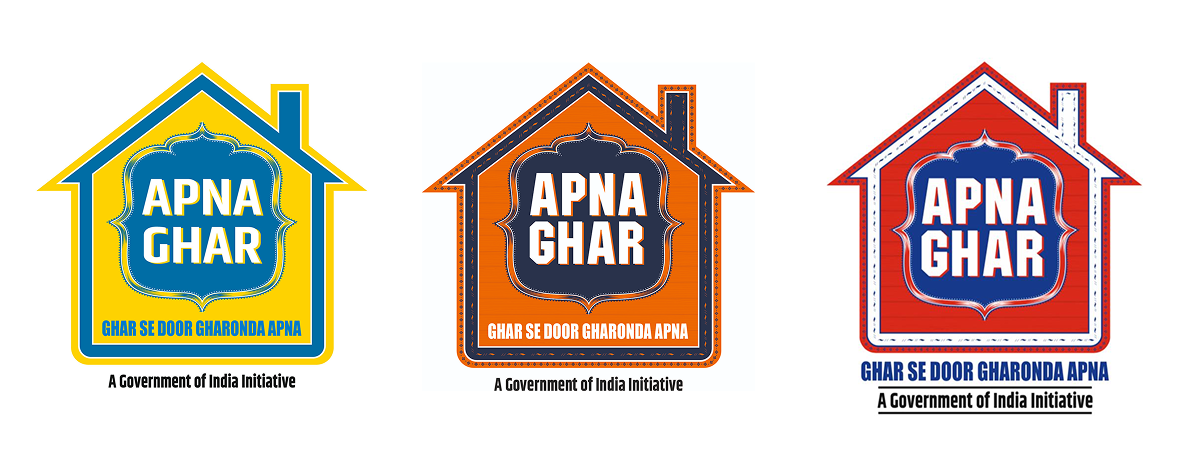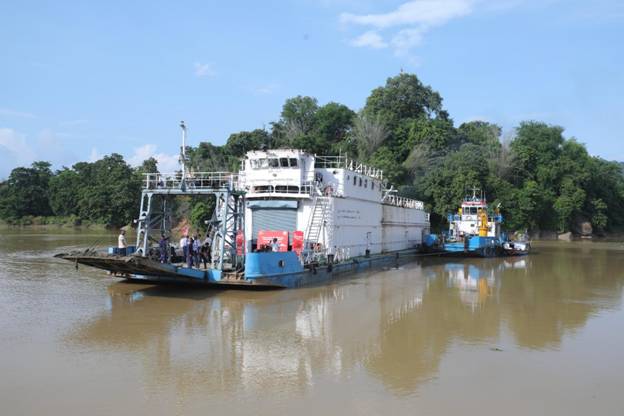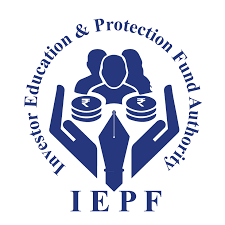Apna Ghar Initiative

- 05 Aug 2025
In News:
The Ministry of Petroleum and Natural Gas has launched ‘Apna Ghar’, a nationwide initiative to provide resting facilities for truck drivers along highways. The programme, launched in 2025, aims to enhance road safety, driver well-being, and logistics efficiency, addressing the long-standing issue of fatigue and poor hygiene conditions faced by India’s trucking workforce.
Key Features of Apna Ghar
- Coverage: As of July 1, 2025, 368 units with 4,611 beds have been set up at retail fuel outlets along national and state highways by Public Sector Oil Marketing Companies (OMCs).
- Facilities Provided:
- Dormitories (10–30 beds per unit)
- Clean toilets and dedicated bathing areas (Houdas)
- Restaurants/dhabas and self-cooking spaces
- Purified drinking water access
- Technology Integration: Launch of the ‘Apna Ghar’ mobile app for bookings, user feedback, and engagement.
- Implementation Model: Public sector OMCs build and manage facilities at fuel retail stations, ensuring accessibility to drivers during long-haul journeys.
Objectives and Significance
- Road Safety: Reduces driver fatigue, a major cause of road accidents.
- Worker Welfare: Provides dignified working and resting conditions for truckers, a vital yet often informal part of India’s transport ecosystem.
- Economic Impact: Supports supply chain resilience by improving the productivity and well-being of drivers.
- Social Development: Aligns with Sustainable Development Goal 8 (Decent Work and Economic Growth) by promoting safe and humane working environments.
National Waterway-57 (River Kopili)

- 05 Aug 2025
In News:
In a landmark development for sustainable logistics in the Northeast, the Kopili River (National Waterway-57) was operationalised with the maiden cargo movement of 300 MT of cement from Chandrapur (Kamrup) to Hatsingimari (South Salmara, Assam).
About the Kopili River
- Origin:Saipong Reserve Forest in the Borail Range, North Cachar Hills, at 1,525 m altitude.
- Length: 256 km (78 km along the Assam–Meghalaya border; 178 km in Assam).
- Basin Coverage: Flows through Meghalaya and Assam, making it an interstate river.
- Significance: Largest south bank tributary of the Brahmaputra in Assam; traverses North Cachar Hill, KarbiAnglong, Nagaon, and Morigaon districts.
- Agricultural Zone: Supports cultivation of rice (winter, summer, autumn), wheat, mustard, and rapeseed in Kamrup and surrounding areas.
Strategic and Policy Significance
- Economic Impact: Reduces road congestion, lowers logistics costs, and provides an efficient alternative for bulk cargo. The trial run replaced the equivalent of 23 truckloads of cement.
- Environmental Gains: Inland water transport curbs emissions and promotes sustainable logistics.
- Regional Development: Enhances connectivity for riverine communities, boosts trade, and unlocks economic opportunities in Assam.
- National Integration: Aligns with Maritime India Vision 2030 and PM Gati Shakti, which seek to create multimodal, integrated transport infrastructure.
Pradhan Mantri National Dialysis Programme (PMNDP)

- 05 Aug 2025
In News:
The Pradhan Mantri National Dialysis Programme (PMNDP) has been significantly expanded by the Government of India and is now operational in all 36 States and Union Territories, covering 751 districts. As of June 30, 2025, a total of 1,704 dialysis centres are functional under the programme.
Background and Objectives
- Launched in 2016, the PMNDP aims to provide free dialysis services to patients suffering from end-stage kidney failure, with special focus on Below Poverty Line (BPL) beneficiaries.
- It is implemented under the National Health Mission (NHM) in Public-Private Partnership (PPP) mode.
- The programme addresses the rising burden of chronic kidney disease and aims to ensure equitable access to life-saving renal care across India.
Key Features
- Dialysis Services: Supports both Haemodialysis and Peritoneal Dialysis.
- Infrastructure Expansion: Initially recommended at all district hospitals, with flexibility to scale down to Community Health Centres (CHCs), especially in remote and tribal regions.
- PMNDP Portal: Integrates all NHM-supported dialysis centres, facilitates creation of a renal registry, and ensures service portability within states (“One State–One Dialysis”) and eventually nationwide (“One Nation–One Dialysis”).
- Funding Mechanism: The NHM provides financial assistance to States/UTs for setting up and operating dialysis centres.
- Implementation Strategy: Expansion is based on gap assessments carried out by States/UTs as part of their annual Programme Implementation Plans (PIPs).
Significance
- Health Equity: Extends life-saving kidney care to vulnerable groups, including rural and tribal populations.
- Cost Reduction: Provides free dialysis, reducing the out-of-pocket burden on families.
- Data Integration: The renal registry aids in epidemiological tracking and planning of kidney health interventions.
- Public Health Impact: Strengthens India’s healthcare delivery under Universal Health Coverage (UHC) goals.
‘Matri Van’ initiative
- 05 Aug 2025
In News:
The Government of India has launched the ‘Matri Van’ initiative in Gurugram under the ‘Ek Ped MaaKe Naam’ programme, symbolizing ecological preservation and community participation. The project was inaugurated by the Union Minister for Environment, Forest and Climate Change, Shri Bhupender Yadav, and the Union Minister for Housing and Urban Affairs and Power, Shri Manohar Lal, during Van Mahotsav 2025.
About the Initiative
- Location & Scale: Spread over 750 acres in the Aravalli hill area along the Gurugram-Faridabad road.
- Concept: A theme-based urban forest aimed at nurturing generations through mother-nature-inspired green efforts.
- Vision: To enhance biodiversity, public well-being, and urban sustainability, while serving as the “heart and lung of Delhi-NCR.”
- Collaboration: Developed through multi-stakeholder participation, including CSR partners, Resident Welfare Associations (RWAs), NGOs, MNCs, school children, and government bodies.
Ecological and Social Significance
- Restoration of degraded land by removing invasive Kabuli Kikar (Prosopis juliflora).
- Plantation of native Aravalli species such as Dhak, Amaltash, Neem, Bargad, Peepal, Gullar, Pilkhan, Khair, Semal, and bamboo.
- Development of theme-based groves, including:
- Bodhi Vatika (sacred fig species like Bargad, Peepal),
- Bamboosetum (bamboo species),
- Aravalli Arboretum,
- PushpVatika (flowering trees),
- Sugandh Vatika (fragrant species),
- Medicinal Plants Vatika,
- Nakshatra and RashiVatika,
- Cactus Garden,
- Butterfly Garden.
Facilities and Infrastructure
- Eco-tourism and community spaces: nature trails, cycle tracks, yoga zones, gazebos, and sitting areas.
- Environmental safeguards: treated water irrigation systems, sprinklers, and waterbodies to aid water conservation and urban flood prevention.
- Urban amenities: parking spaces, public facilities, and accessibility features.
Broader Environmental Vision
- Linked to Mission LiFE (Lifestyle for Environment) with components like:
- Saving food, water, and energy,
- Solid waste and e-waste management,
- Ban on single-use plastics,
- Promotion of healthy lifestyles.
- Complements India’s renewable energy transition, with non-fossil fuel power now accounting for over 50% of the national energy mix.
- Supports Prime Minister’s vision of rejuvenating the Aravalli ecosystem through plantation of native species.
Significance for Delhi-NCR
- Acts as a natural carbon sink to counter rising emissions.
- Provides a green lung to improve air quality in a highly polluted urban region.
- Promotes eco-tourism and environmental education through biodiversity parks, wildlife safaris, and thematic groves.
- Offers citizens a serene, stress-free environment, strengthening the image of Gurugram as a model “Millennium City.”
Investor Education and Protection Fund Authority (IEPFA)

- 05 Aug 2025
In News:
The Investor Education and Protection Fund Authority (IEPFA), established in 2016 under the Companies Act, 2013, functions under the Ministry of Corporate Affairs (MCA) with the mandate of safeguarding investor interests, refunding unclaimed financial assets, and promoting financial literacy across India.
Mandate and Fund Structure
The Investor Education and Protection Fund (IEPF) consists of amounts that remain unclaimed for seven years, including:
- Unpaid dividends,
- Application money due for refund,
- Matured deposits and debentures,
- Accrued interest on investments,
- Grants and donations received from government or other entities.
The fund is utilized to refund unclaimed shares/dividends to rightful investors and to spread financial awareness among citizens.
Recent Developments: Integrated Portal
IEPFA is in the final phase of testing its Integrated Portal, a unified digital platform aimed at:
- Streamlining claim processes for unclaimed shares/dividends,
- Enhancing accessibility for both investors and companies,
- Integrating stakeholders such as depositories and the Public Financial Management System (PFMS).
Companies have been urged to upload their IEPF-1/7 SRNs with prescribed templates to enable smooth data verification and claim processing.
Key Features of the New System
- Simplified claims for low-value refunds through reduced documentation.
- Integrated Call Center to strengthen grievance redressal and ensure responsive communication with stakeholders.
- Temporary disruptions may occur during transition, but the reforms promise faster, transparent, and investor-friendly outcomes.
Investor Awareness Initiatives
IEPFA also undertakes extensive financial literacy campaigns through programs like:
- Niveshak Didi,
- Niveshak Panchayat,
- NiveshakShivir.
These initiatives empower citizens, particularly in rural and semi-urban areas, to make informed financial decisions and protect themselves from fraud and mismanagement.
Significance
- For Investors: Easier access to unclaimed assets and improved grievance redressal.
- For Companies: Structured compliance framework and digital integration with regulators.
- For Governance: Strengthens India’s financial ecosystem by combining investor protection with financial literacy.
